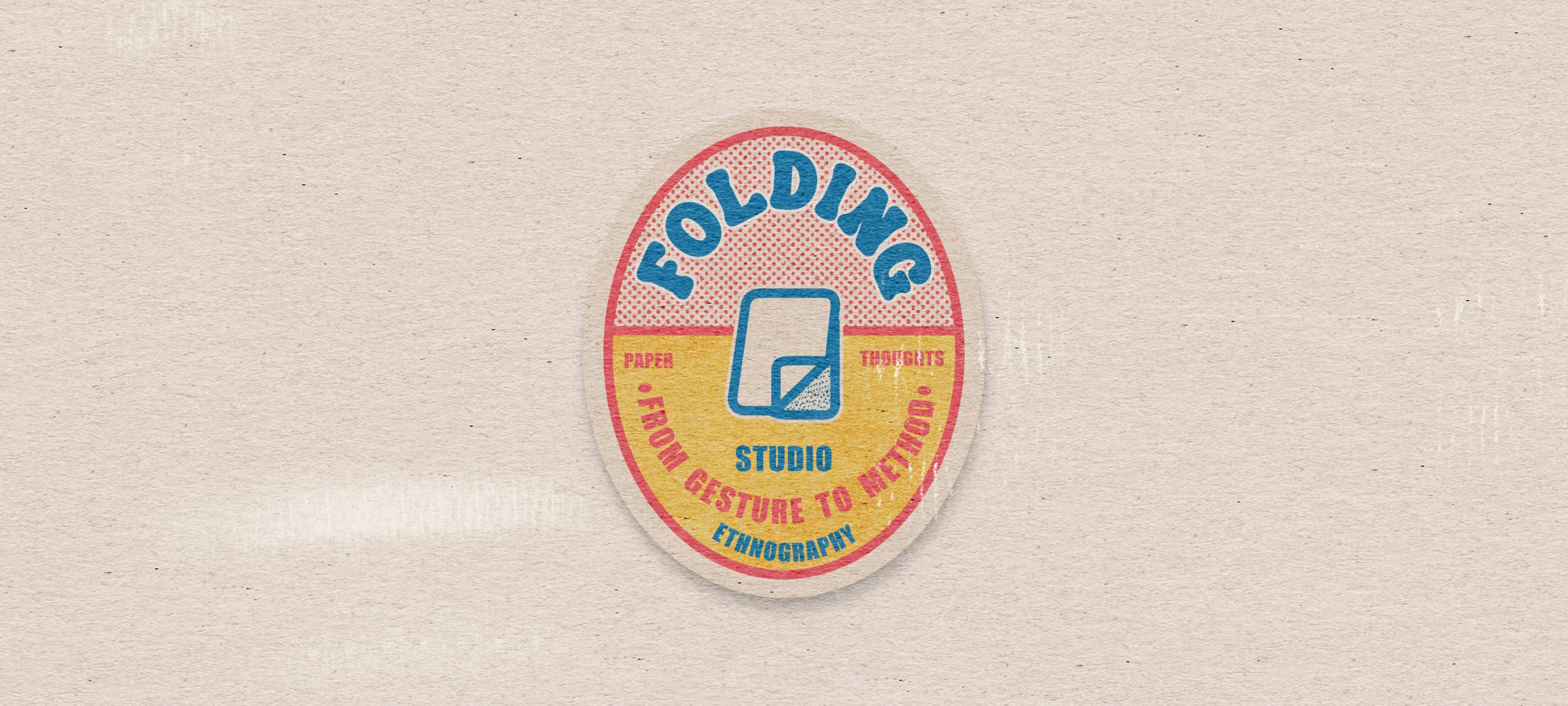From The Motif Series
Folding is a gesture of attention—a way of thinking that bends rather than breaks. In the studio, it is both material and conceptual: paper folds, thoughts fold, time folds. A folded sheet is never only two-sided; it carries hidden interiors, doubled meanings, and suspended continuities. Folding, in this sense, is not only a formal operation but a methodological posture: it resists closure and embraces the coexistence of visible and invisible layers.
In Gabriel Tarde’s relational ontology, the social world is composed of infinitesimal folds of imitation and invention—micro-movements of relation that precede the entities they connect. Tarde’s thought, later re-animated by Bruno Latour (2002) and Maurizio Lazzarato (2010), reminds us that folding is not the act of uniting pre-existing parts, but of generating difference through proximity. Every ethnographic fragment, when folded into another, creates a micro-relation—a new configuration of attention.
Gilles Deleuze (1993), in The Fold: Leibniz and the Baroque, extends this notion from metaphysics to materiality. The fold, for Deleuze, is how the world thinks itself: the monad as a continuous curvature of matter and soul, surface and depth. To fold is to modulate rather than separate—to sense the inflections that join inside and outside. In a studio context, this resonates with how ethnographic materials (notes, images, sounds) become mutable through handling and re-composition.
Anthropologists of material culture have also attended to the epistemic and affective life of folds. Tim Ingold (2013) describes surfaces as “interfaces of becoming” where materials meet and transform one another; for him, to fold is to participate in the ongoing movement of materials rather than impose form upon them. Similarly, Marilyn Strathern (1999) reminds us that analytical relations in anthropology often “fold back upon themselves,” creating reflexive loops between observer and observed. Folding, then, is not only a manipulation of paper—it is an ethical and epistemic gesture that binds the ethnographer to the world’s own self-entanglements.
Ethnographic folding can also be approached through feminist and decolonial materialisms. Karen Barad’s (2007) notion of “intra-action” imagines matter as already entangled—every observation a fold in the fabric of the world. Folding becomes a practice of situated sensitivity, where separation and connection occur simultaneously. Marisol de la Cadena (2015) writes of Andean cosmopolitics as a terrain of “partial connections,” where worlds meet without being fully translated. The fold—literal and conceptual—offers a way to hold such partialities together without erasing their difference.
In Tarde and Des-plegar, folding emerged as an ethnographic operation. Each zine was a choreography of creases—an inquiry structured by hands. Folding turned fragments into forms, not by explaining them but by holding them together through pressure, proximity, and repetition. It is a curatorial act of care that keeps the fragile from dispersing. The risograph sheet, the zine, or the field diary page become provisional architectures of thought—maps of relations rather than archives of data.
Folding also suggests hesitation: a pause before flattening, a refusal of total visibility: the ethnographer’s fieldnotes, the map, the risograph sheet—all become spaces of reversible tension. To fold is to suspend judgment, to let matter think with itself momentarily. In your Studio Ethnography, folding is a way of writing with uncertainty, preserving potentiality.
Studio Exercises — Folding as Experimental Device
Exercise 1: Creased Fieldnotes
Take a page of your fieldnotes and fold it into quarters. Before reopening it, press along the creases with your fingers—feel the resistance and memory of the paper. Now unfold. Observe how the folds reorganize the text: where lines intersect, where words touch that never did before. Circle or underline these new proximities. Write a short reflection: What does the crease reveal about my way of arranging the world?
Exercise 2: Folding Relations
Print two unrelated fragments from your fieldwork—a quote and a photograph, a smell description and a map. Fold them together so that they overlap. Through the thin paper, traces of one will ghost into the other. Unfold them slowly and annotate the emergent hybrid image. Treat the accident as data.
Exercise 3: The Accordion Archive
Select five discarded notes, images, or receipts from your desk. Tape them edge-to-edge into an accordion fold. Stand the folded strip upright on your table; move around it, viewing from different angles. Each pleat hides and reveals. Photograph the accordion from above. Later, unfold it flat and trace the pattern of light and shadow the folds produced.
Exercise 4: The Weekly Fold
Over a month, repeat this ritual every Friday: choose one material from your studio (a print, a draft, a label) and fold it according to a new principle (diagonal, radial, spiral). Record the gesture in a “fold log”: date, material, fold type, discovery. After four weeks, display the folded objects side by side. Notice how the accumulation of folds becomes a record of thinking—a tactile calendar of your ethnographic process.
References
- Barad, Karen. 2007. Meeting the Universe Halfway: Quantum Physics and the Entanglement of Matter and Meaning.Durham, NC: Duke University Press.
- Deleuze, Gilles. 1993. The Fold: Leibniz and the Baroque. Translated by Tom Conley. Minneapolis: University of Minnesota Press.
- de la Cadena, Marisol. 2015. Earth Beings: Ecologies of Practice across Andean Worlds. Durham, NC: Duke University Press.
- Ingold, Tim. 2013. Making: Anthropology, Archaeology, Art and Architecture. London: Routledge.
- Latour, Bruno. 2002. “Gabriel Tarde and the End of the Social.” In The Social in Question: New Bearings in History and the Social Sciences, edited by Patrick Joyce, 117–132. London: Routledge.
- Lazzarato, Maurizio. 2010. The Making of the Indebted Man. Los Angeles: Semiotext(e).
- Strathern, Marilyn. 1999. Property, Substance and Effect: Anthropological Essays on Persons and Things. London: Athlone Press.
